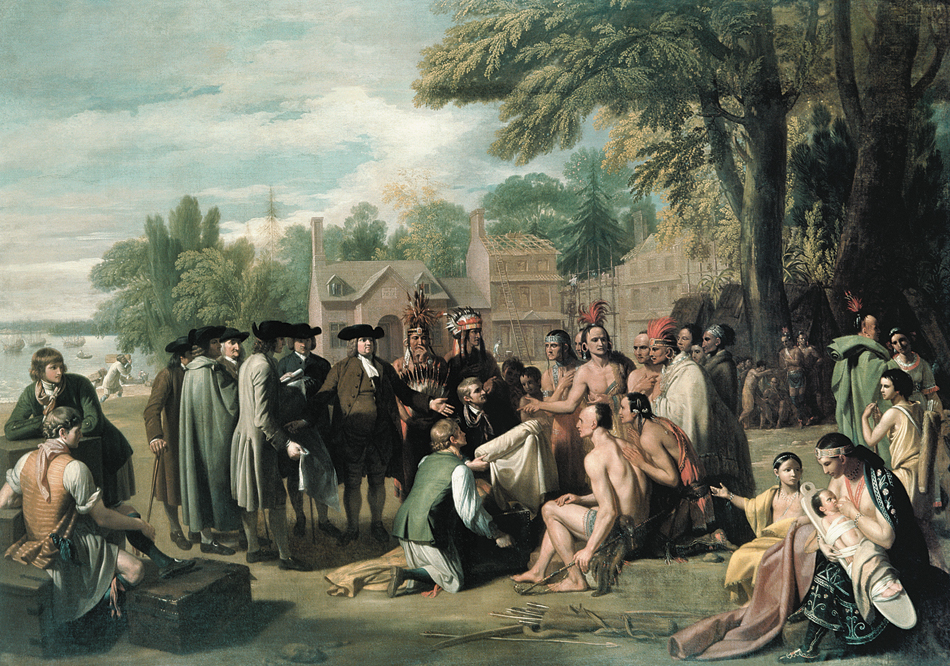Benjamin West, William Penn’s Treaty with the Indians (painting, 1772)
Benjamin West (1738–1820) was an American painter of international renown. Born in what is now Swarthmore, Pennsylvania, West was not formally educated; he claimed in his memoirs that Native Americans taught him to create his own paints by mixing clay from the riverbank with bear grease. West made his early reputation by painting portraits around Pennsylvania. His work caught the eye of several wealthy Pennsylvanians, who commissioned his work and sponsored his artistic education and travel. After traveling in Italy in the early 1760s, West arrived in London to paint portraits of the royal family for King George III; in 1772, the king appointed him the court’s official history painter. He founded England’s Royal Academy of the Arts from 1792 to 1820 and served as its second president. West was one of the first American-born artists to find fame in Europe, but he remained connected to his native country, overseeing the training of many American artists who visited England to study.
Best known for his paintings of historical subjects, West depicted significant historical events in a monumental fashion: on a large scale, in vivid color and detail, and populated by vast numbers of characters.
William Penn’s Treaty with the Indians
William Penn, who was raised as an Anglican but became a Quaker at twenty-two, founded the Province of Pennsylvania, the British colony that ultimately became the state of Pennsylvania. Benjamin West’s painting, William Penn’s Treaty with the Indians, depicts an encounter between Penn and the Native Americans.
